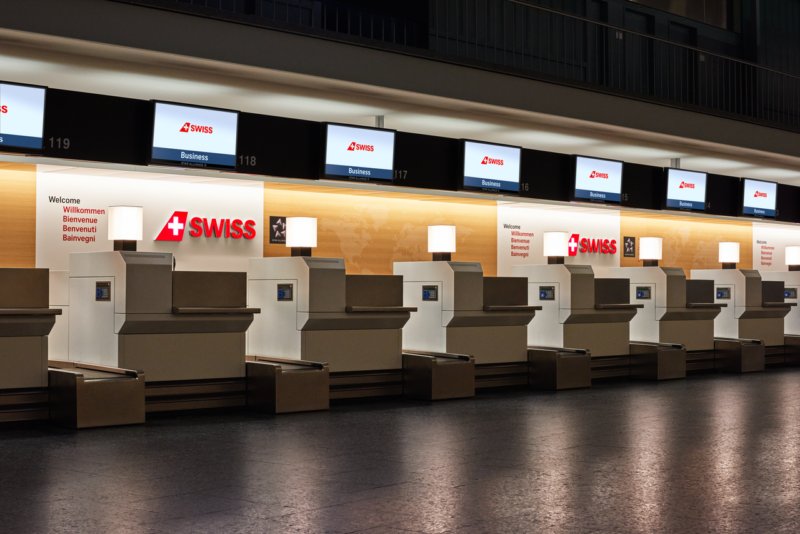You have probably seen horror stories in the media and you may have even experienced it yourself.
Why doesn’t baggage always make its flight?
As frustrating as it is, there are some good reasons why this occurs. With my airline experience in both a frontline and operational role, I hope I can shed some light on the technicalities involved in baggage systems and movements and why you should think first before getting frustrated with airline employees when your bag doesn’t show up on the same flight.
The customer acceptance process and what it means
We all start our journey at check-in, whether it’s online through an app or by seeing a customer service agent. This is the stage where you become accepted onto the flight and you are created in the system as an actual confirmed person rather than just a booking reference.
At this stage, if you are travelling with bags they also become a confirmed object in the system.

All airlines have different baggage allowances, meaning anything over could incur extra costs or even stand-by allocation, meaning the extra or overweight bags are not guaranteed to travel if the flight is space and weight limited.
When check-in is finalised, the flight has two crucial weights ready to form part of the final load sheet:
- The total weight of all checked baggage, sometimes including crew bags.
- The total passenger weight including carry-on by gender and zone.
These two weights join the rest of the uplifted weight such as fuel, freight, crew compliment, aircraft weight etc, producing our ramp and take-off weights. The flight crew use these weights to work out take-off, cruise and landing performance to ensure the safe operation of the aircraft.

Baggage Movements
Between check-in and arrival, your checked luggage endures a lengthy process of being accepted into the system, transferring through a network or baggage systems underground, undergoing security screening and being sorted by baggage handlers.
To put it simply, there are a lot of places for human or technical errors to occur.
At check-in, your bag could be tagged incorrectly or the tag could come off during movement. Sometimes baggage handlers load the wrong barrows or sometimes there aren’t enough staff to cover the amount of flights at one time.
The reality is, no matter how big, how expensive and how advanced the system in place is, mistakes happen – we’re human.
The size of baggage also counts to unwanted baggage offloads. Depending on the aircraft, the amount of bags and their size, sometimes baggage handlers simply cannot fit them into the allocated compartments. Known as a bulk-out on ramp, this frequently occurs on regional services or flights that often see a lot of international connections.
When it comes to the systems in charge of moving the baggage such as the belts, the scanners, the sorters and the computer system involved, these are high-wear locations in the system, meaning a strong upkeep is required to ensure things run smoothly. But just like everything else in life, sometimes things breakdown and that could make the difference between your bag making it to the plane on time or not.
Intentional Baggage Offloads
Aside from human error, there are numerous reasons why airlines intentionally offload passenger bags.
Reading that, you are probably quite frustrated with the process. Why should my bag be offloaded if I paid for a ticket that specifically stated I had an allowance for a checked bag?
The two most common reasons baggage does not make it on flights are:
- Weight and balance and performance limitations
- Tight connections from other services
Aircraft Performance
Aircraft are finely balanced pieces of equipment. They all have different structural weights and centre of gravity envelopes.
The weight and balance of an aircraft correlate to its flying and handling characteristics. Anywhere out of the weight and balance envelope could reduce the controllability and safety of the aircraft.
Think of them like a giant see-saw – too much weight in the front and it will end up nose down. Too much weight in the back and it will end up nose up. Too much weight overall and you might not get off the ground at all.

If there is a higher-than-usual total bag weight combined with a full flight of passengers, it can sometimes mean the aircraft exceeds a structural limitation, meaning baggage, freight or even passengers have to be offloaded.
Additionally, fuel requirements will be different on every flight. For example, poor weather en route may require extra fuel uplift or fuel tankering due to limited resources at the destination port may take away usable weight for passengers and baggage.
Some flights today push aircraft to the absolute limit. Air New Zealand’s flight from AKL to JFK on the Boeing 787 Dreamliner is a performance-limited flight due to the stage length and depending on any weather en-route. Sam Chui travelled through this service and highlighted that 65 passengers had their bags offloaded due to fuel requirements.
The structural weights of an aircraft can also change depending on external factors such as the temperature, wind, runway conditions, runway length and aircraft maintenance limitations to name a few.
For example, instead of having the full Maximum Take Off Weight (MTOW) available to use for a flight in optimal conditions, a Regulated/Restricted Take Off Weight (RTOW) may be used instead, thus resulting in weight having to be shed if it exceeds these limitations.
Connecting Baggage
A large percentage of passengers aren’t just flying to one destination. They have either connected from another service or are intending on catching another service straight after their current flight.
This can throw a spanner into the works when it comes to baggage movements.
Example:
Jackson is travelling SYD-MEL-PER. His flight from SYD has a standard time off arrival into MEL of 0900 and his flight to PER has a standard departure time of 1000 giving him a 60 min connection time. Jacksons flight from SYD arrives into MEL 45 min late. Jackson makes the PER flight but his checked bag is still being unloaded from the SYD-MEL flight.
Airlines don’t often hold flights for passengers and baggage as it is cheaper and more efficient to send the bag as a rush bag on a later service and deliver it to the passenger.
For the best chances of having your bag arrive on your connecting flight, ensure there is suitable time for it to make its connection. Airlines often limit your minimum connection time but its always good to check and book what you feel comfortable with.
The same applies to travelling on a singular service. Don’t check your bag in too late, as while check-in is still open, any hold ups in baggage movement could hinder its chances of hopping onto the same service as you.
The difference between lost and offloaded baggage
If you follow the media, you immediately notice the word “lost” being used a lot when it comes to baggage performance.
A lot of the time, bags are not actually lost, but rather sitting aside waiting for the next ride to your destination due to one or more of the above mentioned reasons.
Lost baggage is when no party has an initial way of locating it and the systems produce no indication of its status. Unfortunately it can take a while for lost baggage to be located and usually involves a message being distributed across the network containing details from your report. Individual airlines have different policies and procedures when it comes to lost baggage so consult them if you are ever in this situation.
The following things can help you prevent your bag from being lost/help recover it from being lost:
- Use a bag that has distinguishable features and can be uniquely described in a missing bag report.
- Attach a solid and durable bag tag containing at least your name and phone number.
- Know the brand of your bag.
- Have a photo of your bag before you send it off.
Airline staff will help based on what they know
It is frustrating when your baggage doesn’t turn up and it is especially amplified when you haven’t been made aware of it.
Whilst it is sometimes tempting to get frustrated with airline staff due to the inconvenience, chances are they don’t know the full story either and can only help based on the facts they have internally and what information you can provide them.
Most baggage offloads due to weight and balance occur last minute, hence the inability to contact the passenger without delaying the flight. Bags that don’t make it to the aircraft for other reasons simply aren’t known about at all airports as the teams responsible for loading the plane will only load what is recorded and with the count they have.
Unfortunately, there are definitely cases out there where airlines have provided little to no help. If this is the case, do be sure to pursue different contact points and staff members if in person and in an extreme scenario contact the regulator involved in customer rights relevant to your location.
Air travel is a complex system and many thousands of components have to run accurately and on-time to ensure the smooth operation of the entire system. Unfortunately no matter what airline you fly, physics, human error and other technical issues still apply to the operation, meaning sometimes bags won’t always be where they are supposed to be.
The key thing to remember is that systems and procedures are in place to get the baggage to you if it doesn’t make it on your flight.
Whilst not every detail and reason was covered as to why baggage sometimes make its flight, the select most common should hopefully provide you with an insight to the behind the scenes operation involving your checked bags.
Image credit: Swissport International




